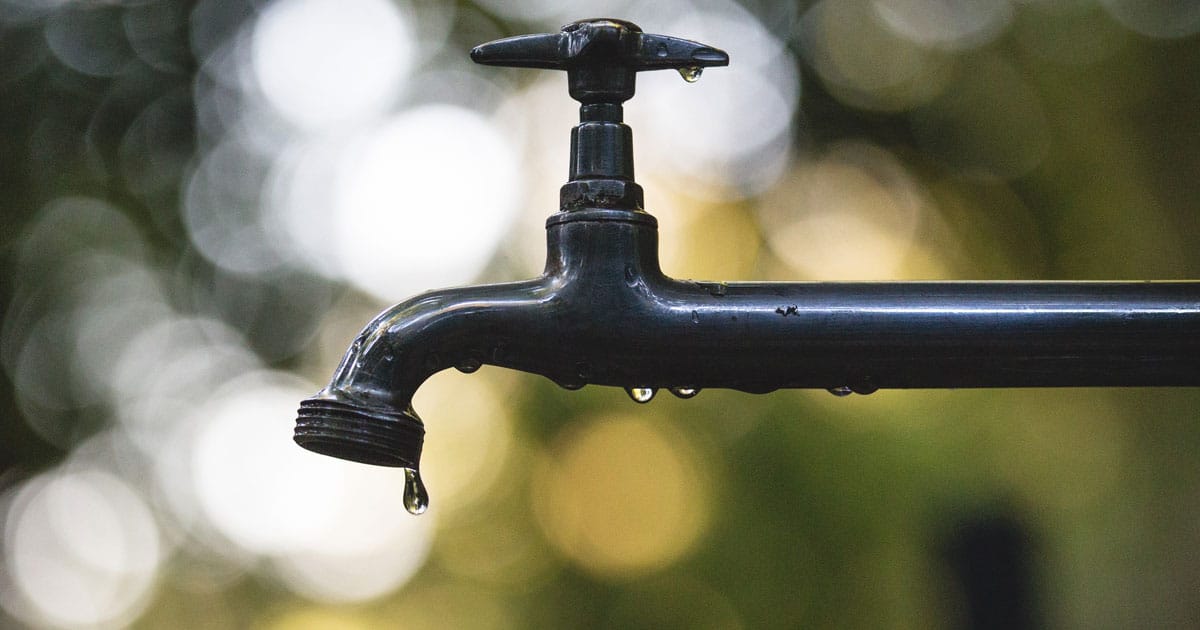A leaking pipe is ubiquitous; you have probably seen it many times, whether it was outside or inside your home. If you are reading this article, you might be wanting to fix the issue yourself without the help of a professional plumber. No worries, we have got you covered!
Depending on the severity of the leaks, you need to take different approaches because there is no one-fit-all solution. However, most water line dripping can be fixed fairly easily.

In this article, we’ll show you how to fix a leaking pipe at home. Let’s dive right in!
Step 1: Turn off the water supply
The first thing you need to do is shut off the water valve so you don’t end up in a flooded house if something goes wrong while you’re working on the pipe.
First, you need to locate your main water valve or whatever is connected with the leaking pipe. It’s usually located in your basement or crawl space.
Then, make sure you turn it clockwise to shut off the water. If the leak is found near a fixture, such as a sink or a toilet, you can also turn off the local valve so that it doesn’t shut off your whole-house water supply.
Step 2: Drain the pipe
After the water is shut off, you need to drain the remaining water in the pipe. You can do this by turning on the lowest faucet in your home, such as an outdoor hose or a basement sink, and let the water run until there is no more water coming out. This will reduce the pressure and prevent more water from leaking out when you are fixing the leaking pipe.
Step 3: Dry the pipe
Once all the water has come out, you need to dry the area around the leak with a clean towel. This will make it easier for you to apply any sealant or repair material. You should also place a bucket or a towel under the leak to catch any dripping water that’s leftover in the pipe.
Step 4: Choose a repair method
Depending on the size and location of the leak, you can choose one of the following methods to fix it:
Epoxy putty: This is a temporary fix that can seal small leaks in pipes. You need to wear gloves and knead a small amount of epoxy putty until it becomes soft and uniform in color. Then, wrap it around the leaky area and press it firmly. Then you need to wait for at least an hour for the putty to completely dry before you can turn on the water supply.
Pipe clamp: This is another temporary fix that can stop small leaks in pipes. You need to buy a pipe clamp that fits the size and shape of your pipe from a hardware store. Then, place a rubber pad over the leak and tighten the clamp over it with a screwdriver. Make sure the clamp is secure and does not move before turning on the water supply.
Slip coupling: This is a permanent fix that can replace a damaged section of pipe. You need to buy a slip coupling that matches the diameter of your pipe from a hardware store. Then, cut out the damaged section of the pipe with a hacksaw or a pipe cutter and remove any burrs with a file. Slide one end of the slip coupling onto one end of the pipe and push it back slightly. Then, slide the other end onto the other end of the pipe and push it back slightly.
Soldering: This is a permanent fix that can join two pieces of copper pipe together. You need to buy a soldering kit that includes a torch, flux, and solder from a hardware store. Then, clean the ends of the pipe and apply flux to them. Heat the pipe with the torch until it glows red and touch the solder to the joint. Let the solder melt and fill the gap between the pipes. Wait for the solder to cool and harden before turning on the water supply.
Step 5: Turn on the water supply and check for leaks
Once you have fixed the leak with your chosen method, you can turn on the water supply again and check if the leak has stopped. If you used a temporary fix, such as epoxy putty or pipe clamp, you should call a plumbing repair professional as soon as possible to make a permanent repair. If you used a permanent fix, such as slip coupling or soldering, you should still inspect your pipe regularly for any signs of corrosion or damage.
Well, fixing a leaking pipe is not a big deal in most cases. You just need to be willing to get your hands dirty and follow these steps. It’s also recommended that you are aware of the common causes of leaking pipes, such as high water pressure, corrosion, freezing, clogging, or improper installation so that you can prevent future damages. You should also maintain your pipes regularly by cleaning them, insulating them, and replacing them when needed. This way, you can avoid leaks in the future and save money on repairs.
